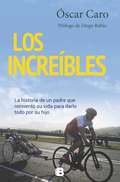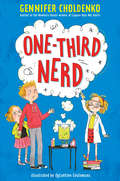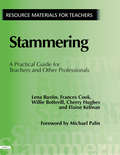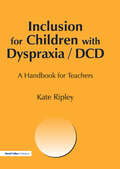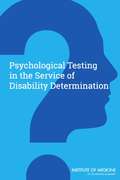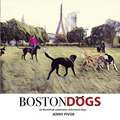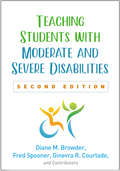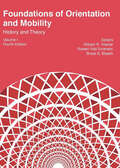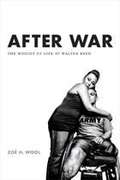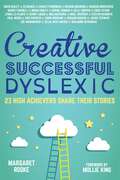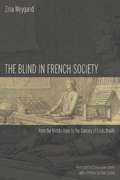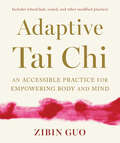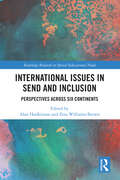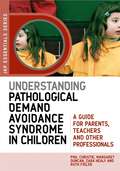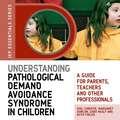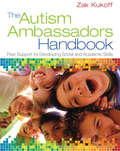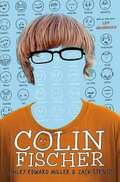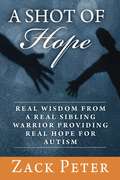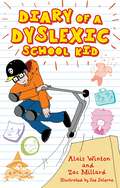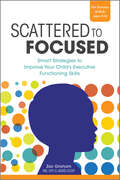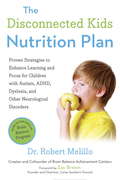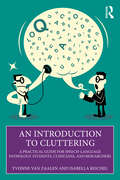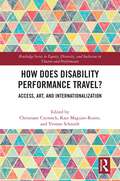- Table View
- List View
Los increíbles
by Óscar Caro (FIDEC) Diego RubioLa historia de dos superhéroes de la vida real La vida de Óscar Caro cambió por completo cuando Luis David, su hijo menor, sufrió dos eventos cardiorrespiratorios que le ocasionaron una parálisis cerebral a los seis meses de nacido. Al conocer la historia del Team Hoyt -un equipo en el que un padre corre maratones empujando la silla de ruedas de su hijo-, Luis David le propuso a su papá que persiguieran ese sueño y, así, Óscar decidió convertirse en atleta profesional a los cuarenta años para correr, nadar y pedalear cientos de kilómetros con su hijo al hombro. El Team Caro Wagner, como se hace llamar este equipo de superhéroes de la vida real, ha corrido maratones y triatlones en Colombia y en el exterior, y aunque el esfuerzo de terminar una competencia de estas es monumental, no es nada comparado con el que debe hacer una familia con un miembro en condición de discapacidad. Los Increíbles es el inspirador testimonio de un padre que hace hasta lo imposible por su hijo, y es también una historia que nos demuestra que es posible salir adelante, a pesar de las complicaciones que la vida nos presenta. Al comprar este libro, estás ayudando a los niños de la Fundación FIDEC, Luis David Caro Wagner.
One-Third Nerd
by Gennifer Choldenko Églantine CeulemansA funny, fast-paced, and heartfelt story from the Newbery Honor-winning author of the Al Capone series. <p><p> Fifth grade is not for amateurs, according to Liam. Luckily, he knows that being more than one-third nerd is not cool. Liam lives in the Bay area near San Francisco with his mom and two younger sisters. Dakota is fascinated by science and has a big personality but struggles to make friends; Izzy, a child with Down syndrome, makes friends easily and notices things that go past everyone else. Dad lives across town, but he's over a lot. <p> And then there's Cupcake, their lovable German shepherd, who guards their basement apartment. Recently, Cupcake has a problem--she's peeing in the house. The kids need to make enough money to take her to the vet before their landlord upstairs finds out. And Mom and Dad have said if Cupcake doesn't stop, they will find her a new home. But the kids will never let Cupcake go. Can they save her?
Stammering: A Practical Guide for Teachers and Other Professionals (Jkp Essentials Ser.)
by Elaine Kelman lena Rustin Frances Cook Willie Botterill Cherry HughesThis book provides essential information and guidance about stammering for those working in educational settings. The highly experienced team of authors demonstrates how early intervention is essential if children who stammer are to have the best chance of recovery; the practical strategies that can help with children's oral participation in class, particulary in the light of recent innovations such as the literacy hour and national numeracy strategy; the ways in which teachers can address the educational and social implications of stammering, and reverse the risk of underachieving if these children become isolated, anxious, withdrawn or disruptive; how to influence the climate in schools so that children who stammer are better understood and can be helped to their full potential; and how to prepare pupils for exams, particularly in secondary schools where they may be taking oral examinations. Throughout the text, reference is made to new government initiatives where appropriate, and each chapter includes case studies, practical tasks and activities that can be used in the school setting.
Inclusion for Children with Dyspraxia: A Handbook for Teachers
by kate RipleyThis book is about children with dyspraxia: developmental co-ordination disorders (DCD) and what teachers and other professionals can do to promote their learning and their social inclusion in a mainstream setting. The author addresses issues which affect access to the curriculum in Key Stages 1-4 and offers strategies to support children which have proved effective to experienced practitioners and can be managed in a group or class context. A key component of the book is an understanding of the emotional and social needs of children with dyspraxia.
Psychological Testing in the Service of Disability Determination
by Committee on Psychological Testing Including Validity Testing for Social Security Administration Disability DeterminationsThe United States Social Security Administration (SSA) administers two disability programs: Social Security Disability Insurance (SSDI), for disabled individuals, and their dependent family members, who have worked and contributed to the Social Security trust funds, and Supplemental Security Income (SSSI), which is a means-tested program based on income and financial assets for adults aged 65 years or older and disabled adults and children. Both programs require that claimants have a disability and meet specific medical criteria in order to qualify for benefits. SSA establishes the presence of a medically-determined impairment in individuals with mental disorders other than intellectual disability through the use of standard diagnostic criteria, which include symptoms and signs. These impairments are established largely on reports of signs and symptoms of impairment and functional limitation. "Psychological Testing in the Service of Disability Determination" considers the use of psychological tests in evaluating disability claims submitted to the SSA. This report critically reviews selected psychological tests, including symptom validity tests, that could contribute to SSA disability determinations. The report discusses the possible uses of such tests and their contribution to disability determinations. "Psychological Testing in the Service of Disability Determination" discusses testing norms, qualifications for administration of tests, administration of tests, and reporting results. The recommendations of this report will help SSA improve the consistency and accuracy of disability determination in certain cases.
Walk In My Shoes
by ed. Charlotte J. DewittUsher Syndrome is a rare genetic disease that causes deafblindness. This anthology includes 27 authors writing about their experiences.
Teaching Students with Moderate and Severe Disabilities, Second Edition
by Diane M. Browder Fred Spooner Ginevra R. Courtade and ContributorsFor years the text of choice for developing excellence as a teacher of K–12 students with moderate and severe disabilities, this clearly written work has now been revised and updated. Chapters provide step-by-step procedures for designing standards-based individualized education plans and evaluating and enhancing student progress. Methods and materials for teaching literacy, mathematics, science, and social studies are described in depth. The book also describes effective ways to build functional daily living skills. User-friendly features include extensive vignettes and classroom examples, end-of-chapter application exercises, and reproducible planning and assessment tools. Purchasers get access to a Web page where they can download and print the reproducible materials in a convenient 8 1/2" x 11" size. New to This Edition *Reflects important advances in research and evidence-based practice. *Chapter on collaborating with culturally diverse families, plus a stronger multicultural focus throughout. *Chapter on writing instruction. *Two additional chapters on reading and math, ensuring coverage of both foundational and grade-aligned skills. *Increased attention to students with autism spectrum disorder and to uses of technology.
Foundations of Orientation and Mobility: Volume I: History and Theory
by William R. Wiener Robert S. Wall Emerson and Bruce B. BlaschNow in its fourth edition, Foundations of Orientation and Mobility remains the classic reference and textbook for O&M professionals and students alike. A comprehensive work spread across two volumes, Foundations of O&M, 4th ed., contains contributions from over 50 of the leading scholars, teachers, and practitioners in the field addressing topics such as teaching methodologies, sensorimotor functioning, working with both children and adults, and navigating complex intersections. There is also an emphasis on the many new technologies and apps available to children and adults who are blind or low vision to help them better navigate their world. Foundations of Orientation and Mobility: History and Theory, Volume 1, 4**th ed. covers essential O&M knowledge, encompassing techniques, perception, orientation, low vision, auditory skills, kinesiology, psychosocial factors, and learning theories. It also includes chapters on technology, guide dogs, orientation aids, and environmental accessibility.
After War: The Weight of Life at Walter Reed
by Zoë H. WoolIn After War Zoë H. Wool explores how the American soldiers most severely injured in the Iraq and Afghanistan wars struggle to build some kind of ordinary life while recovering at Walter Reed Army Medical Center from grievous injuries like lost limbs and traumatic brain injury. Between 2007 and 2008, Wool spent time with many of these mostly male soldiers and their families and loved ones in an effort to understand what it's like to be blown up and then pulled toward an ideal and ordinary civilian life in a place where the possibilities of such a life are called into question. Contextualizing these soldiers within a broader political and moral framework, Wool considers the soldier body as a historically, politically, and morally laden national icon of normative masculinity. She shows how injury, disability, and the reality of soldiers' experiences and lives unsettle this icon and disrupt the all-too-common narrative of the heroic wounded veteran as the embodiment of patriotic self-sacrifice. For these soldiers, the uncanny ordinariness of seemingly extraordinary everyday circumstances and practices at Walter Reed create a reality that will never be normal.
The Effects of Blindness and Other Impairments on Early Development
by Zofja S. JastrazembskaA scientific study of blind children, where there are frequently marked delays in locomotor achievements by sighted standards.
Creative, Successful, Dyslexic: 23 High Achievers Share Their Stories
by Richard Rogers Benjamin Zephaniah Charley Boorman Nigel Mccrery Paul Nixon Sir Richard Branson Kenny Logan Marcus Brigstocke Eddie Izzard Chris Robshaw Mollie King Meg Mathews Ed Baines Brian Conley Darcey Bussell Cbe Steven Naismith David Bailey Cbe Sir Jackie Obe Zoe Wanamaker Cbe Theo Paphitis Margaret Rooke Lynda La Cbe Sophie Conran Zelda West-Meads Kelly Hoppen Mbe23 very well-known people from the arts, sport, and business worlds talk about how dyslexia affected their childhood, how they were able to overcome the challenges and use the special strengths of dyslexia to achieve great success in adulthood. Darcey Bussell CBE, Eddie Izzard, Sir Richard Branson, Meg Mathews, Zoe Wanamaker CBE, Richard Rogers, Benjamin Zephaniah, Steven Naismith, Lynda La Plante CBE, Sir Jackie Stewart OBE, Sophie Conran and others share their stories, and their advice. All reveal the enormous difficulties they faced, the strength required to overcome them, the crucial importance of adult support, and how `the different way the brain is wired' in dyslexia has enabled them to see something different in the world and to use their creativity in an exceptional way. They talk about `thinking sideways', and the ability to look at a bigger picture, the often strong visual strength, and the ability to listen, and to grasp simplicity where other people see only complexity. They also talk about how dyslexia continues to challenge them, and the ways they have found to work around this. An introduction, and final section that includes practical information about dyslexia, are written with the support of Dyslexia Action, and a percentage of profit from the book is donated to Dyslexia Action. The book will be essential reading for teachers and other professionals, and for families affected by dyslexia, and inspirational for people with dyslexia.
Now We Are Citizens: The Blind in French Society from the Middle Ages to the Century of Louis Braille
by Zina Weygand Emily-Jane Cohen<P>The integration of the blind into society has always meant taking on prejudices and inaccurate representations. <P>Weygand's highly accessible anthropological and cultural history introduces us to both real and imaginary figures from the past, uncovering French attitudes towards the blind from the Middle Ages through the first half of the nineteenth century. Much of the book, however, centers on the eighteenth century, the enlightened age of Diderot's emblematic blind man and of the Institute for Blind Youth in Paris, founded by Valentin Haüy, the great benefactor of blind people. <P>Weygand paints a moving picture of the blind admitted to the institutions created for them and of the conditions under which they lived, from the officially-sanctioned beggars of the medieval Quinze-Vingts to the cloth makers of the Institute for Blind Workers. She has also uncovered their fictional counterparts in an impressive array of poems, plays, and novels. The book concludes with Braille, whose invention of writing with raised dots gave blind people around the world definitive access to silent reading and to written communication.
Adaptive Tai Chi: An Accessible Practice for Empowering Body and Mind
by Zibin GuoA simple and inclusive Tai Chi program, completely modifiable with helpful illustrations, that empowers people of all physical abilities to experience the transformative qualities of this art. Includes sequences for standing/moving, stationary standing, seated, and wheelchair.In Tai Chi Chuan, the traditional Chinese martial and healing art, we learn to overcome challenges by empowering the mind and transforming the body. Adaptive Tai Chi offers an innovative approach that speaks to this powerful idea and makes Tai Chi accessible and beneficial to people with a range of physical conditions or ambulatory impairment.The slow, circular, flowing, and graceful movements of Tai Chi require little space and no equipment, making it an ideal practice for people with different physical abilities (it&’s been included in the Paralympics since 2008). Adaptive Tai Chi introduces readers to the culture, philosophy, and physiology of Tai Chi—and gives readers four completely illustrated practices, each modified for different physical abilities, including conventional standing/moving, stationary standing, seated, and wheelchair sequences.Along with the complete illustrated adaptive Tai Chi sequences, Guo includes notes and philosophical insights into each practice. The complete program offered in Adaptive Tai Chi allows everyone to access the profound benefits of Tai Chi practice.
International Issues in SEND and Inclusion: Perspectives Across Six Continents (Routledge Research in Special Educational Needs)
by Alan Hodkinson Zeta Williams-BrownInternational Issues in SEND and Inclusion brings together a collection of cutting-edge researches on approaches to special education needs and disability education, across 6 continents and within 12 countries. Written by authors who are experts in their own countries in relation to special educational needs and disability, the book provides a unique knowledge and understanding of different international perspectives in special educational needs, disability and inclusion. The chapters present extended case studies and reflect on current policy, practice and theory within that context, challenging assumptions which can dominate the policy and practice of inclusive education. Each of the six continents has a separate section and introduction within the book to offer a relevant approach and context for analysis. The book will be of great interest to academics, researchers and postgraduate students in the fields of inclusion, special educational needs and disability, teacher education and comparative education.
Understanding Pathological Demand Avoidance Syndrome in Children: A Guide for Parents, Teachers and Other Professionals
by Phil Christie Margaret Duncan Ruth Fidler Zara HealyThis straightforward guide offers a complete overview of Pathological Demand Avoidance Syndrome (PDA) and gives practical advice for overcoming the difficulties it poses in a wide range of contexts from diagnosis through to adulthood. Starting with an exploration into the background of PDA that answers many of the immediate questions triggered when a child is first diagnosed, the book goes on to look at the impact of the condition on different areas of the child's life and what can be done to help. The authors present useful information on early intervention options and workable strategies for managing PDA positively on a day-to-day basis. They also examine ways to minimize common difficulties that may be encountered at home and school, making life easier for the child, family and peers. The final chapters tackle new problems that can arise when the teenage years hit and how to assist a successful transition from adolescence to adulthood. Illustrative case examples are included throughout, and the book concludes with a list of valuable resources for further information and advice. Full of helpful guidance and support, this user-friendly introductory handbook is essential reading for anyone caring for, or working with, children with PDA.
Understanding Pathological Demand Avoidance Syndrome in Children: A Guide for Parents, Teachers and Other Professionals (JKP Essentials)
by Phil Christie Margaret Duncan Ruth Fidler Zara HealyStraightforward guide to understanding PDA for anyone needing an overview of the condition. Pathological Demand Avoidance Syndrome (PDA) is a developmental disorder that is being increasingly recognised as part of the autism spectrum. The main characteristic is a continued resistance to the ordinary demands of life through strategies of social manipulation, which originates from an anxiety-driven need to be in control.This straightforward guide is written collaboratively by professionals and parents to give a complete overview of PDA. Starting with an exploration into the syndrome, it goes on to answer the immediate questions triggered when a child is first diagnosed, and uses case examples throughout to illustrate the impact of the condition on different areas of the child's life. Early intervention options and workable strategies for managing PDA positively will make day-to-day life easier for the child, their family and peers. New problems faced in the teenage years and how to assist a successful transition from adolescence to adulthood are also tackled. The book concludes with a valuable resources list.Full of helpful guidance and support, this user-friendly introductory handbook is essential reading for families, carers and anyone who knows a child with PDA.(P) 2021 Hodder & Stoughton Ltd
The Autism Ambassadors Handbook: Peer Support for Learning, Growth, and Success
by Zak KukoffSometimes, all a student needs to succeed is a friend. Every day, thousands of students with autism spectrum disorders (ASD) struggle to stay afloat at school—sometimes bullied, often ostracized, these students could benefit from a peer who models and reinforces socially appropriate behavior and coaches them through challenging schoolwork. This inspirational new book describes how to set up just such a peer-mentoring organization in your school. Kukoff provides: Steps for organizing and implementing your own Autism Ambassadors program Clear-cut guidelines on what it entails for student “ambassadors” More than a hundred specific interventions any student can employ with students with ASD
Colin Fischer
by Ashley Edward Miller Zack StentzSOLVING CRIME, ONE FACIAL EXPRESSION AT A TIME Colin Fischer cannot stand to be touched. He does not like the color blue. He needs index cards to recognize facial expressions. But when a gun is found in the school cafeteria, interrupting a female classmate's birthday celebration, Colin is the only for the investigation. It's up to him to prove that Wayne Connelly, the school bully and Colin's frequent tormenter, didn't bring the gun to school. After all, Wayne didn't have frosting on his hands, and there was white chocolate frosting found on the grip of the smoking gun... Colin Fischer is a modern-day Sherlock Holmes, and his story--as told by the screenwriters of X-Men: First Class and Thor--is perfect for readers who have graduated from Encyclopedia Brown and who are ready to consider the greatest mystery of all: what other people are thinking and feeling.
A Shot of Hope: Real Wisdom from a Real Sibling Warrior Providing Real Hope for Autism
by Zack Peter"Autism shakes up your world. It has changed my life and I wasn't even the one diagnosed with it. My brother's name is Ethan Wolfgang, but we call him Deets. He is one of the greatest gifts my family has ever received. And one of the most challenging."So begins Zack Peter's memoir of his family's struggle to cope with his brother's autism. And thus began Peter's mission to ensure that his brother will one day live an independent life. He candidly describes his attempts to get his family on board with Ethan's biomedical treatment and his fight against their reluctance. He relates how his life changes when he comes up with the idea of hosting a local fundraisers, which then throws him into the world of activism. He describes how this leads to his becoming a full-time advocate for autism. As everything in his life becomes more and more centered around "the spectrum," Peter faces the personal struggle of being a voice for the cause while trying to maintain his own identity. Sharing the wisdom he's learned in a voice that's equal parts snark and heart, Peter offers a memoir that's as funny as it is poignant, filled with no-nonsense advice and what he calls "The Hope Rules," which are designed to help preserve sanity, dignity, and the will to stay strong.Whether you know someone with autism or not, Zack Peter's refreshing take on his life as a sibling and activist serves as inspiration to persevere, even when the odds seem impossibly long. It's everything you need to help keep your head up...like the bottom of your glass.
Diary of a Dyslexic School Kid
by Alais Winton Zac MillardExperience day-to-day life for a dyslexic kid, including school life, bullying and coping with tests and homework, in this frank and funny diary. Co-authored with a teenage boy with dyslexia and illustrated with cartoons, this is a positive yet honest look at the difficulties of being dyslexic. Using a simple and relatable approach, the authors display the ups and downs of school - and home - life with a reading difficulty, focussing on the sometimes overwhelming experience of being at a bigger school and studying loads of new subjects. Providing tips for what really helps and works based on real-life experience, this fun, accessible book shows teens and tweens with dyslexia that they are far from alone in their experiences.
Scattered to Focused: Smart Strategies to Improve Your Child's Executive Functioning Skills
by Zac GrishamThis book is filled with expert advice and actionable strategies that can help your smart but scattered 4-12-year-old child build the skills they need to thrive both at school and at home.Parenting a child who struggles with executive function—the skills that help us stay focused, manage our emotions, and plan ahead—can be a challenge, whether they have an official ADHD diagnosis. Set your child up for success with:Quick assessment tools—Better understand your child's level of executive function and learn what motivates them, for stronger communication and connection.Expert advice—Learn how to build confidence and autonomy in your smart but scattered child with research-based guidance for helping them practice self-control, manage time, follow routines, beat procrastination, and more.Common sense explanations—Explore how executive function works in clear, simple language, and then apply what you learned through fun activities like using code words and making memory boards.Build better habits and routines with our comprehensive parent guide, Scattered to Focused!
The Disconnected Kids Nutrition Plan
by Robert Melillo Zac BrownA scientifically developed program for feeding kids with special needs--based on the popular Brain Balance Program Dr. Robert Melillo's Brain Balance program has helped thousands of families across the country, offering a drug-free, scientifically based method for addressing a wide range of conditions, including autism spectrum disorders and ADHD. In this new book, he presents the nutritional side of the Brain Balance Program, featuring guidelines, tips, and kid-friendly recipes based on the latest scientific research on how food affects the brain. Designed to help busy parents feed picky kids in a beneficial way, the book will show readers how to: * Recognize the difference between a fussy eater and a problem eater. * Ease the sensory issues that make for mealtime mayhem. * Identify food sensitivities using a simple elimination diet. * Choose supplements that will help ensure adequate daily amounts of the specific vitamins and minerals important to brain health. * Prepare delicious, healthy meals that will pass the taste test of even the most finicky eaters. * Understand how the brain plays a primary role in many dietary and nutritional issue including food sensitivities.From the Trade Paperback edition.
Zorg voor de verstandelijk gehandicapte: Basiswerken verpleging en verzorging
by Yvonne van de VenBehandelt de meest voorkomende onderwerpen en begrippen.<P><P> Koppelt de theorie aan de praktijk door middel van casussen.<P> Behandelt naast de beperkingen ook de mogelijkheden tot ondersteuning.<P> Gaat verder dan de basisprincipes.<P> Zorg voor de verstandelijke gehandicapte laat zien hoe veelzijdig begeleiding aan mensen met een verstandelijke beperking is. Alle onderwerpen en begrippen die regelmatig voorkomen in deze zorg, komen aan bod. Om de theorie dicht bij de praktijk te brengen, is deze gekoppeld aan een casus. Dat maakt het boek aansprekend en goed leesbaar. Ook onderwerpen als wetgeving en kwaliteit blijven op deze manier dicht bij het werk van de verzorgende. De ondersteuning aan mensen met een verstandelijke beperking vindt zo veel mogelijk in de maatschappij plaats. Dit vergt van de verzorgende een aanpassing in houding en begeleiding. Het boek behandelt, naast de beperkingen, de mogelijkheden tot ondersteuning. Mensen met een verstandelijke beperking ervaren vaak beperkingen op lichamelijk, psychisch en sociaal gebied. De combinatie hiervan maakt het noodzakelijk om vanuit een breed perspectief naar cliënten te kijken. Het boek maakt duidelijk dat de rol van de verzorgende centraal staat in de multidisciplinaire begeleiding. Om problemen op tijd te signaleren, is observatie op basis van voldoende basiskennis noodzakelijk. Deze kennis biedt dit boek.
An Introduction to Cluttering: A Practical Guide for Speech-Language Pathology Students, Clinicians, and Researchers
by Yvonne van Zaalen Isabella ReichelAn Introduction to Cluttering explores the speech disorder of cluttering, offering concrete, evidence-based methods for its diagnosis and treatment.Cluttering is a globally recognized communication disorder, yet it is often poorly understood. This book presents a historical overview of the efforts of pioneers in the field to demystify the cluttering disorder, before introducing the aetiology and symptoms of cluttering from several perspectives: physiological, psycho-linguistic, neurological, social, affective, and cognitive. It also provides an in-depth discussion of the identification, differential diagnosis, and assessment of cluttering, using current and advanced diagnostic procedures before explaining the rationales and unique, innovative procedures for evidence-based treatments of cluttering. Engaging practical examples and theory boxes are featured throughout the book.Providing effective and user-friendly procedures for cluttering diagnosis and intervention, this book is an essential read for all current and future speech and language therapists.
How Does Disability Performance Travel?: Access, Art, and Internationalization (Routledge Series in Equity, Diversity, and Inclusion in Theatre and Performance)
by Yvonne Schmidt Christiane Czymoch Kate Maguire-RosierThis edited collection investigates the myriad ways in which disability performance travels in a globalized world. Disability arts festivals are growing in different parts of the world; theatre and dance companies with disabled artists are increasingly touring and collaborating with international partners. At the same time, theatre spaces are often not accessible, and the necessity of mobility excludes some disabled artists from being part of an international disability arts community. How does disability performance travel, who does not travel – and why? What is the role of funding and producing structures, disability arts festivals and networks around the world? How do the logics of international (co-)producing govern the way in which disability art is represented internationally? Who is excluded from being part of a touring theatre or dance company, and how can festivals, conferences, and other agents of a growing disability culture create other forms of participation, which are not limited to physical co-presence? This study will contextualize disability aesthetics, arts, media, and culture in a global frame, yet firmly rooted in its smaller national, state, and local community settings and will be of great interest to students and scholars in the field.
